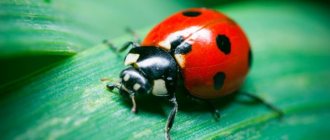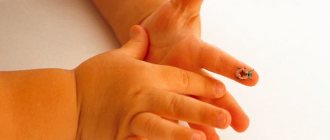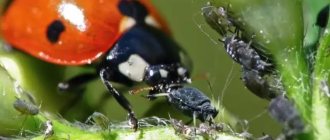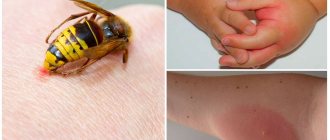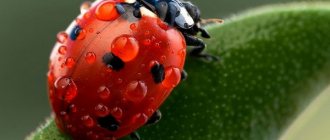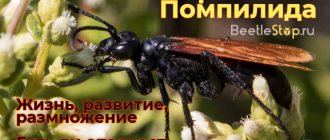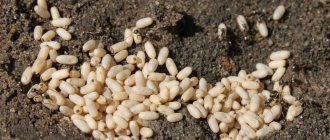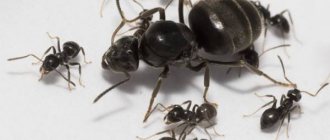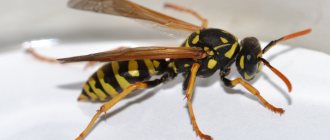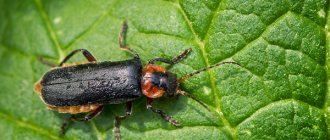Ladybug in the garden
Beneficial insects are our underrated allies in the fight against pests. And although they may, at first glance, seem very small, delicate and defenseless, in a short period of time they can destroy a surprising number of pests.
Ladybug
One of the most important beneficial insects in our country is a beetle called the ladybug (lat. Coccinellidae).
This small, brightly colored predatory beetle is the most numerous in our country and, under favorable conditions, can free many plants from annoying insects. The larvae of ladybugs eat the most pests ; until they transform into adults, they can absorb from 400 to 3 thousand aphids. Adult ladybugs have a slightly smaller appetite; they eat more than 200 different insects every day.
The main food is aphids , but ladybugs are not particularly picky and willingly take the opportunity to profit from psyllids, hymenopteran sawflies and horntails, mites, scale insects and scale insects, or dipteran larvae. Such a serious ally cannot be ignored by us, so it is worth taking a closer look at him in order to create better living conditions for him in our garden.
Types of ladybugs
a ladybug with a small insect with a bright red shell, with several black dots. This is only one of his many images, since there are more than 5 thousand varieties of ladybugs in the world, of which we have more than seventy.
The most common are, of course, Two-spot (lat. Adalia bipunctata) and Seven-spot (lat. Coccinella septempunctata), with a typical red shell, but besides them there are also insects with an orange-red shell and black dots - Ten-spot, (lat. Adalia decempunctata), red shell and black dots, with a yellow rim in a circle - Ocellated ladybug (lat. Anatis ocellata), black armor and yellow or red dots - Fourteen-spotted ladybird (lat. Coccinula quatuordecimpustulata), yellow or cream shell and black dots - Twenty-two-spotted cow , or psyllobora , with an orange shell and cream dots - Calvia decemguttata .
Twenty-two-pointed ladybird, or psyllobora
Like adults, the larvae also differ from each other, and their appearance is not at all similar to either of the parents. Ladybug larvae are small, but at close range they look very scary, resembling small crocodiles or miniature monsters. In general, pupae can easily be confused with the Colorado potato beetle. In general, the body of the larvae is sectional, gray-black with yellow or orange spots, but there are species that have yellow larvae with black speckles.
Due to their unusual appearance, the offspring of ladybugs can often be mistaken for pests and destroyed. Therefore, before we decide to take radical measures, we should observe the insects.
Interestingly, not all ladybugs known to us are predators, because some (for example, the alfalfa twenty-two-spotted ladybird) can feed on fungi (powdery mildew), and even plants (one of the few pests belonging to ladybugs is the alfalfa twenty-four-spotted ladybird (lat. Subcoccinella vigintiquatuorpunctata).
Life cycle of ladybug development
The life cycle of a ladybug is quite complex. The adult female, after fertilization, lays oblong, yellow-orange eggs. By attaching them to different parts of plants, usually closer to the food source, e.g. aphid colonies . One female can lay more than 1000 eggs during her short life (about 1-1.5 years). The eggs hatch into larvae, which then develop into pupae, and then into an adult ladybug (about 40-60 days pass from the moment the eggs are laid to the appearance of a mature insect in our climate).
Ladybug larva
In autumn, adult insects look for secluded and warm places where they can safely overwinter. As a rule, they choose tree bark, stones, compost piles, heaps of leaves or needles, but sometimes they can also hide in window cracks or window sills, but in such shelter they rarely manage to wait until spring, because, as a rule, they dry out.
Ladybug on the site.
The ladybug is an independent insect and it is difficult to predict where it will decide to settle, so if we want to have it in our garden, we should try a little. First of all, you should not use any chemical plant protection products at your dacha or choose ones that are not harmful to ladybugs. In addition, it is worth setting aside a small space in the garden, in which we will not interfere (we stop mowing the grass, raking the leaves).
Thus, we create a favorable environment not only for ladybugs, but also for many beneficial insects, such as lacewings, spiders and ants, which in such a place can unhinderedly reproduce, develop and overwinter. If such a wild nook spoils the appearance of the garden, you can cover it with a decorative wooden fence or an original hedge.
What’s remarkable is that these inconspicuous insects also have their own secret weapon to protect themselves from enemies. Sensing danger, they secrete a yellow, unpleasant-smelling substance that should scare off the enemy.
The reputation of our allies has been slightly “tarnished” in recent years because of one of its relatives, Harmonia axyr >Ziat ladybug.” It is more aggressive and reproduces faster than our “domestic” ones, therefore it poses a greater threat to them. It happens that the Asian ladybug bites people, causing an unpleasant burning sensation at the site of the bite, and sometimes allergies. And although this species is truly annoying and alien to us, this should not affect the reputation of the whole genus, these beautiful and useful insects.
If you have something to add, please be sure to leave your comment on the site
Last time I talked about aphids and showed a photo of them. Today's story is about the main enemy of aphids - the ladybug . Everyone is familiar with the appearance of this bright red beetle with black dots on its back, but not everyone knows what its larvae look like, which are no less important, and are sometimes destroyed due to some similarity with the larvae of the Colorado potato beetle. Today I will show you what a ladybug larva looks like, how it grows, molts, how it eats aphids, pupates, and what hatches from it. I will show different types of adult ladybird beetles: the seven-spot ladybird (lat. Coccinella septempunctata) and the two-spot ladybird (lat. Adalia bipunctata) and tell you how they differ.
Interaction type
Coccinellidae larvae and parasite
The relationship between ladybug and aphid begins in the larval stage of Coccinellidae. The life cycle of a ladybug starts with the beginning of spring, in March-April. For three weeks, the larva feeds abundantly on aphid insects, eating approximately one thousand aphid insects. When the larva is sufficiently nourished and ready for the next stage of transformation, it spins itself a cocoon. The larva matures in a cocoon for a week and reaches a certain level of maturity. Only after this the Ladybug beetle is born.
Adult and Aphidoidea
Having formed into an adult, the ladybug eats up to two hundred aphid insects per day. And she does this from spring to autumn. Almost the entire daily routine of the beetle is tied to searching for and eating aphids. When the cow does not find the object of desire, it can feast on scale insects, whiteflies or spider mites. The ladybug is considered an industrial device for exterminating aphids and similar pests. There is a practice of spreading cows by dropping them from airplanes onto fields.
Before the harvest period, ladybugs feed on aphids and other insects , feeding enough to lay eggs. Thus, during the period of active growth and development of the plant, the ladybug protects it from pests. For the winter, these insects climb into the mountains, hide in rock crevices and tree bark cracks and remain there until early spring.
Where does the name ladybug come from?
The ladybug received its unusual name due to its bright red color, which aroused the sympathy of people. So, for example, in Slovenia and the Czech Republic it was called the “sun” (Slunechko), in Germany and Switzerland it is known as the “Virgin Mary’s bug”, in Latin America it is called “St. Anthony’s cow”. What is the origin of the name “ladybug”, there are two versions in this regard, according to the first, it was called “ladybug” for its ability to secrete poisonous milk, which scares off potential predators; our ladybug received the prefix “ladybug” for its meek and peaceful disposition. According to another version, these insects became “God’s” due to their ability to destroy aphids, thereby helping to preserve the crop.
How to attract beneficial insects?
In addition to aphids and insects, ladybugs also eat pollen. And the pollen of some plants is preferable to them than the pollen of others. Examples of herbs that can be planted in your area to attract beetles include:
Calendula is a perennial herbaceous plant. Grows well in bright sun. Blooms in a lush bright orange palette. Attracts ladybugs.- Dill is an unpretentious green plant that is extremely effective in attracting beetles. A widely used spice.
- Cornflowers are a perennial plant that attract ladybugs well.
- Coriander is a wonderful spice that attracts beetles during flowering and growth.
- Geranium - this unpretentious plant will also help you attract ladybugs.
- Tansy is a decorative and quite useful plant in our topic.
- Dandelion - surprisingly, but the herbaceous plant so familiar to us is also extremely effective in exterminating aphids.
- Cosmea - this amazing flower can become not only a wonderful garden decoration, but also an equally pleasing protector.
- Yarrow is one of Ladybug's favorite plants.
- Mint – This herbal tea will help you at dinner and provide a complete meal for Coccinellidae.
- Fennel is a medicinal plant that requires fertile soil and warmth, but more than pays for these efforts with a good indicator of ladybug immigration into your territory.
- A succession of sun-loving decorations for your garden will also serve as an excellent bait for beetles. Among garden herbs, this flower will stand as a beacon for cows.
If you want your vegetation to be favored by ladybugs, then:
- Never use insecticides. These products affect both harmful and beneficial insects. And they last a long time after use.
- You can also buy or transfer beetles from stores or other people's lands, naturally, with the permission of the owner of the beetles.
- Ferramonium baits can also be used. They also show themselves to be an effective measure in attracting ladybugs. It is preferable to combine it with the first advice on planting certain varieties of plants on your site.
The reader may find other useful information on our website about other ways to combat aphids:
- Folk remedies for fighting aphids.
- How to get rid of aphids on orchids at home?
- How to get rid of aphids on peppers?
- Who eats aphids, and what else is used to kill them?
- What to do if there are aphids on your favorite roses?
- How to control aphids on fruit trees?
- How to deal with pests on cucumbers?
- How to fight aphids on indoor plants and win?
- How to effectively fight aphids on currants?
- How to deal with white aphids on indoor and garden plants?
Ladybug: description, structure, characteristics. What does a ladybug look like?
According to the biological classification, the ladybug is an arthropod insect that belongs to the Coleoptera and the family of ladybirds.
The size of a ladybug ranges from 4 to 10 mm. The shape of their body is either round or oval-elongated, flat below and very convex above. The body surface of some types of ladybugs is covered with fine hairs. The structure of their body includes a head, a pronotum, a chest consisting of three sections, an abdomen, wings with elytra and three pairs of paws.
The ladybug's head is small (although in some species it may be slightly elongated), it is motionlessly connected to the anterior chest. But the ladybug's eyes are relatively large. The insect's antennae, which consist of 8-11 segments, are highly flexible.
The ladybug's pronotum is convex, has a transverse structure and a notch at the anterior edge. On its surface there are often “signature” spots of different shapes.
Thanks to the presence of three pairs of paws, the ladybug can move quite quickly both on the grass and along plant stems. The abdomen of ladybugs consists of five or six segments, which are covered from below by sternites (segmental semirings).
Pests
A pest such as aphids is a small, sedentary insect. Adults grow to a maximum length of 8mm. The pest's diet consists of plant sap.
The mouthparts consist of a proboscis, with which they easily pierce the leaf plate and suck out the juice. Aphids secrete a very sweet and healthy substance - honeydew, which ants love. Therefore, very often, when infested with aphids, an anthill is observed in the area.
This small pest is a carrier of dangerous diseases that lead to the death of plants.
They live in fairly large colonies and prefer a mild and warm climate. There are winged and wingless representatives. In autumn, females lay eggs in the bark of trees, near the buds, where they easily survive the winter.
With the arrival of warmth, wingless individuals emerge from the eggs, which attack young plants and begin to actively feed. They can lay offspring without mating, so intensive population growth is observed.
By mid-summer, females with wings are born, which fly to other plants and create new colonies. It is their clutches of eggs that can overwinter, and in the spring everything repeats again.
What do ladybugs eat?
All ladybugs are predators, but they are very useful predators for humans, as they eat various harmful parasites: aphids, mites, small caterpillars. Sometimes during hunger they will not disdain even the eggs of the Colorado potato beetle. Some types of ladybugs also eat plant foods: mushroom mycelium, plant pollen, leaves and flowers of some trees.
A little history
It is worth saying that they learned about ladybugs as real rescuers from dangerous aphids at the beginning of the 19th century and this happened in the USA. The situation was as follows: a very voracious and dangerous fluffy shield aphid was accidentally brought from Australia to California, which simply multiplied incredibly quickly.
For gardeners who tried to use a variety of methods and methods of control, this became a huge problem, since all efforts were in vain. Aphids caused great damage to citrus trees.
The current situation was simply disastrous and scientists began to study the relationship between the ladybug and the aphid. The reason for these studies was the example of the interaction of the “ladybug” with other insects, where the bug destroyed mealybugs and scale insects.
Entomologists managed to find out that Rodolia cardinalis, a type of ladybug, which is the biggest enemy of aphids, lives in Australia. Then this species was specially brought to California and quite successfully, the scheme worked, since the problem was solved in 2 years.
It is worth saying that among all types of ladybugs there are those that are real leaders - Hippodamia convergens. These predators are very voracious and are able to clear an area of pests in a short time, eating all the insects in their path. This species is very similar to other representatives, but there are differences in origin due to different environmental conditions.
How do ladybugs live?
Regardless of the species, all ladybugs are not gregarious insects, but ardent individualists leading a separate lifestyle. They gather together only during their mating season for procreation, as well as for flights to warmer regions and wintering grounds. Since these insects love warmth, the species that live in our temperate latitudes gather in large flocks before the onset of winter cold and fly away like birds for the winter in places with a warmer climate.
Although there are sedentary individuals who also gather together in some secluded place during the winter cold, usually these are collapsed stones, fallen bark and tree foliage. With the onset of spring and warmth, they scatter across the meadows and grasses again.
Lifestyle and habitat
Ladybugs live in almost every corner of the globe with the exception of Antarctica and the polar regions, where the air temperature never rises above zero. The habitat depends on the type of insect. It can be:
- any plants that have aphid colonies;
- meadows (most often located near water bodies);
- trees;
- field herbs;
- reed, sedge and other aquatic plants.
You can find bright bugs in a vegetable garden or garden, in a city park, on the edge of a forest.
Ladybugs are loners. They gather in groups only during the mating season, as well as for wintering or migrating to a warmer region. Insects are diurnal. They are in search of food, either crawling from plant to plant or making short flights.
Types of ladybugs, photos and names
Zoologists identify 4,000 different species of ladybugs, divided into 7 subfamilies. We will describe the most interesting among them.
Two-spot ladybird
This is a beetle with a body length of up to 5 mm, with a dark red body and two black dots (hence the name).
Seven-spotted ladybird
It is this type of ladybug that is most common in Europe. Its size is 7-8 mm. Its elytra are painted red, there are three black spots on the sides, and the seventh is located near the head of the insect.
Twelve-spotted ladybug
This ladybug has a length of 6 mm, a bright pink or red color, and, accordingly, 12 black spots on the elytra.
Thirteen-spotted ladybird
This type of ladybug has as many as 13 spots against the background of red-brown elytra; some of its spots can merge with each other.
Asian ladybug
This ladybird is up to 7 mm long and is divided into two subspecies. One of them has a yellow wing cover with black spots, both large and small. The second subspecies is characterized by black coloration of the elytra, on which red-orange spots are visible.
Ocellated ladybird
This is a very large representative of the ladybird family, reaching up to 10 mm in length. It has red or yellow elytra and black spots surrounded by lighter rims.
Pointless ladybug
This is a very rare species; its characteristic feature is the absence of signature spots. Also, the red or brown body of the pointless ladybug is covered with small fibers.
Blue ladybug
This is another unusual member of the ladybug family, having a characteristic blue color. Such insects live exclusively in Australia.
How do ladybugs reproduce? Stages of ladybug development.
Ladybugs reach sexual maturity, depending on the species, at 3-6 months of life. Their mating season begins in the spring. The male finds his chosen one by the characteristic smell that she emits during that period. A short time after mating, the female ladybug lays eggs, and often acts very wisely, laying them near aphid colonies in order to immediately provide future offspring with food.
Ladybug eggs are attached to the underside of the leaves; they are oval in shape with slightly tapered ends. There are up to 400 eggs in one clutch. Unfortunately, the females themselves die soon after laying eggs.
After 1-2 weeks, variegated ladybug larvae emerge from the eggs. They have an oval or flat shape. The surface of the larva's body is often covered with thin bristles or hairs. In the first days of their lives, they eat the shell of the egg from which they hatched, then neighboring eggs without or even with embryos (yes, ladybug larvae can be cannibals). Gradually gaining strength, they begin to eat the aphid colony.
The future ladybug remains in the larval state for 4-7 weeks, after which the pupation stage begins. The pupa is attached to a leaf of the plant and in this position, in the cocoon, spends 7-10 days; it is during this period that all body parts characteristic of a cow are formed. After this period, a fully formed adult appears.
Development cycle
Most ladybugs reproduce in the spring or fall. Female ladybugs, depending on the species, lay from 3 to 300 eggs. The eggs are laid near aphid colonies. Larvae from the testicles of the two-spotted ladybug usually develop within 5-8 days. The larva eats 350 to 400 aphids daily and reaches maturity in 10 to 15 days. Then it turns into a pupa, and its cocoon usually hangs in clearly visible places.
The conversion cycle lasts from 4 to 7 weeks. In the temperate zone, young and adult individuals hide in the cracks of trees or under their bark for the winter.
Every few years, in the summer, the beaches are strewn with seven-spotted ladybugs. This happens because they don't have enough aphids. For this reason, they are forced to migrate in search of food. At this time, they are so hungry that they bite everyone - even people - to see if they are suitable for food.
The benefits and harms of ladybugs
The benefits of the ladybug, especially in our latitudes, are undeniable; the principle “the enemy of my enemy is my friend” works here. Ladybugs, by eating various insect pests, provide a great service to agricultural lands. Sometimes they are even specially bred in special places and then sprayed over fields and plantations infested with pests.
But among them there are also herbivorous species, most of them live in tropical areas, which can also harm agricultural crops.
Interesting facts about ladybugs
- Since ancient times, people have revered ladybugs, which in the imagination of the ancients served as the personification of divine powers. For example, our ancestors, the ancient Slavs, considered ladybugs to be messengers of the Sun goddess.
- Also, since ancient times, people used ladybugs to predict the weather, so an insect flying away from the palm promised clear and sunny weather. And vice versa, a cow that wanted to stay on the hand was a harbinger of bad weather and rain.
- In many cultures, the ladybug is considered a symbol of good luck; for the same reason, many superstitions and signs are associated with them; the common belief is that in no case should you harm these insects, so as not to incur troubles and hardships.
- It is still a mystery to scientists how ladybugs always invariably return to the same places after their migrations for the winter.
